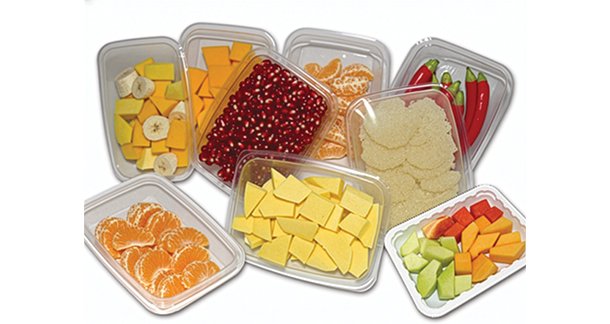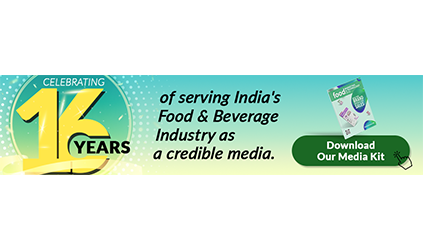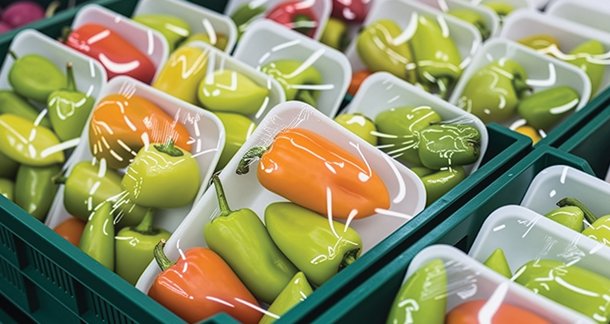ABSTRACT
Innovations in food product development and packaging are driven by the need for safe, nutritious foods with minimal environmental impact. Traditional preservation methods are being replaced by non-thermal technologies such as high hydrostatic pressure, pulsed electric fields, cold plasma, and ohmic heating. These techniques inactivate microorganisms, extend shelf life, and maintain product quality. Combined with advanced packaging systems, they offer tailored solutions for safety, preservation, and reduced wastage.
- INTRODUCTION
Packaging is one the essential elements required for protection and to extend the shelf life of food products. However, it is required not only for food preservation and protection but also for safe transportation of products during storage and handling. Increasing exports and developing export market needs have also affected the packaging trend. Packaging requires containing food, protecting food from environmental factors, convenience in handling, storage, marketing, and communicating information to consumers about the food inside the package. Therefore, it has an active role in retaining the safety and quality of foods throughout the supply chain. The use of properly designed containers for transporting and marketing of horticultural produce can significantly reduce their losses and maintain their freshness and quality for longer periods. Although traditional packaging covers the basic needs of food containment, innovations in food packaging are both anticipated and expected. Innovative packaging is the result of consumers demand for packaging that is more advanced and creative than what is currently available. Traditional food packages are passive barriers designed to delay the adverse effect of the environment on the food product. These new innovative packages allow the package to interact with food and environment and play a dynamic role in preservation of food product. All the new packaging technologies have great commercial potential to ensure the quality and safety of food with fewer or no additives and preservatives, thus reducing food wastage and maintaining the quality of the produce.
- CONTROLLED AND MODIFIED ATMOSPHERIC PACKAGING
In controlled atmosphere packaging (CAP), the composition of gas inside the package is altered and continuously monitored/maintained at a preset level with the use of scrubbers or other means. Whereas, in modified atmosphere packaging (MAP), the gas composition within the package is not monitored or adjusted and a predetermined gas mixture is used to flush packages before closing, which depends on the oxygen sensitivity and rate of the metabolic activity of the product. It involves changes or modification in atmosphere inside the package with respect to the normal composition of air and ultimately reduces the physiological and microbial decay of perishable produce. - METHODS FOR CREATING MODIFIED ATMOSPHERES
- Passive Modified Atmosphere: In this method, fresh produce is sealed in a packaging film with selective or non-selective permeability to gases. The product’s natural respiration consumes oxygen (O₂) and releases carbon dioxide (CO₂), gradually creating the desired internal atmosphere. This process is self-regulating but slower, and the equilibrium gas composition depends on the respiration rate of the product, storage temperature, and film permeability. It is widely used for fresh fruits and vegetables.
- Active Modified Atmosphere: Active MA is achieved by mechanically altering the gas composition before sealing the package. This is typically done by creating a partial vacuum and flushing the package with a predetermined gas mixture (e.g., nitrogen, carbon dioxide, or a blend) to quickly establish the desired atmosphere. Active MA ensures faster preservation benefits and allows precise control over gas ratios, making it suitable for high-value, perishable, or oxygen-sensitive foods such as meat, seafood, and bakery products.
- FOOD SAFETY ISSUES
The present food legislation, taking into consideration the consumer desire for natural, minimally processed, and convenient food products, in addition to the never-ending changes at industrial, retail, and distribution levels, considers food safety as a global concern. This concern provides a stimulus to the packaging industry to present numerous innovative techniques to address the legal and regulatory requirements along with the changing needs of the food industry and consumers.

CONCLUSION
Trends in the emergence of biodegradable packaging technology with improved quality and safety have resulted in innovations in packaging techniques. Research and development, in response to consumer preferences, have given rise to active, intelligent, and bioactive food packaging techniques that are purely innovative. These innovative packaging technologies have contributed toward the enhancement of food quality, safety, feasibility, and the bioactivity of functional components. The applicability of novel and innovative packaging techniques is growing widely because of their health impact and has resulted in reduced consumer complaints. In the near future, traditional packaging will be completely replaced by innovative food packaging techniques, as these techniques are rapidly making their way into the global market.
REFERENCES
- Aider M. Chitosan application for active bio-based films production and potential in the food industry. LWT-Food Sci Technol. 2010;43(6):837-42.
- Barbosa-Pereira L, Aurrekoetxea GP, Angulo I, Paseiro-Losada P, Cruz JM. Development of antioxidant active films containing tocopherols to extend the shelf life of fish. Food Control. 2014;31(1):236-44.
- Brody AL, Bugusu B, Han JH, Sand CK, McHugh TH. Active packaging for food applications. Boca Raton (FL): CRC Press; 2008.
- Duncan TV. Applications of nanotechnology in food packaging and food safety: barrier materials, antimicrobials and sensors. J Colloid Interface Sci. 2018;363(1):1-24.
- Food and Agriculture Organization of the United Nations (FAO). The State of Food and Agriculture 2019: Moving forward on food loss and waste reduction. Rome: FAO; 2019.
- Kerry JP, O’Grady MN, Hogan SA. Smart packaging technologies for fast moving consumer goods. Chichester (UK): John Wiley & Sons; 2020.9. Singh S, Gaikwad KK, Ajji A, Langroodi AM.
- Smart packaging technologies and their applications in conventional food packaging systems: A review. Food Packag Shelf Life. 2021;27:100616.
Komal and Ruchi Verma2*
1 M.Sc Student
2*Assistant Professor
1,2Department of Food Processing and Technology,
Gautam Buddha University,Greater Noida (U.P)
*Corresponding author email: ruchiverma0715@gmail.com



